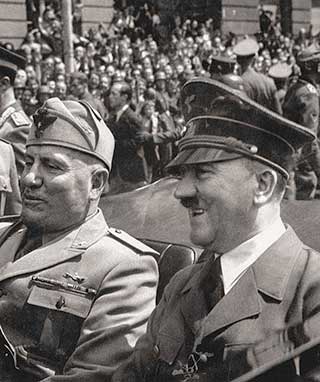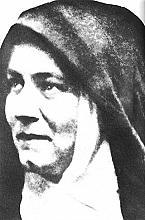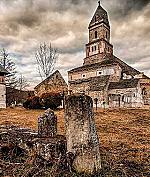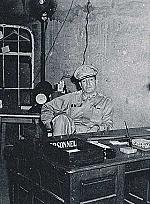A war story: Italian Catholics and a Fascist Europe

[Mussolini and Hitler, 1940—Wikimedia]
IN WORLD WAR II, 97 percent of Italy’s population identified as Roman Catholic. Some joined Mussolini’s Fascist Party and enlisted to fight in the Italian Army, but some also risked imprisonment or death to protect Jews and supported the resistance. Most would have been people without much influence, men and women who went to Mass, prayed, worked, and did good deeds for their neighbors. Most of their stories will never be told.
The popes and the dictator
The individuals in Italy who receive the lion’s share of historical scrutiny are the wartime popes, Pius XI (1857–1939) and Pius XII (1876–1958). As leaders of the Roman Catholic Church, they had responsibility for the care of Catholics around the world, as well as the Holy See in Rome. Their roles were both pastoral and political, navigating ecclesiastical polity and secular politics. Pius XI and Benito Mussolini (1883–1945) came to prominence the same year, 1922: Pius XI was made pope in February, and King Victor Emmanuel III made Mussolini prime minister in October.
Though raised by a devoutly Catholic mother and baptized in the church, Mussolini chose to emulate his outspokenly anticlerical father. As a young journalist, his first article was titled, “God Does Not Exist.” Mussolini founded Italy’s Fascist Party in 1919 and, tapping into a rising tide of Italian nationalism and antisocialist sentiment, rose quickly to power.
Despite his own lack of religious belief, Mussolini realized he could not afford to antagonize the pope and Italian Catholics. His primary political opponents were socialists, Communists, and politically active Catholics. If he could placate the Catholics, that would go a long way in securing his leadership.
A major point of contention between the papacy and the Italian state had for years been the so-called Roman Question. Since 1870, when Italian forces took control of Rome and completed what they called Risorgimento (Italian unification), popes had refused to recognize the legitimacy of the Italian government. Calling themselves “prisoners of the Vatican,” they refused to leave the walls of the Vatican compound.
Now Pius XI saw that working with Mussolini could promote the interests of the Holy See. Neither he nor Mussolini were fans of parliamentary democracy. Together they hashed out an agreement to establish the independence of the Vatican, restore the Roman Catholic Church as the state religion of Italy, and keep the pope out of political affairs.
From Pope Pius to . . . Pope Pius
This uneasy accommodation bore fruit in 1929. On February 11 of that year, Cardinal Pietro Gasparri (1852–1934)—who had been laid up with the flu for three days—rose from his sickbed to sign the Lateran Accords as Pius XI’s representative.
These agreements established Vatican City as an independent enclave within the city of Rome and regulated relations between the church and the Italian state. The Vatican received some financial advantages, and the pope was pledged to remain politically neutral in both national and international affairs.
Order Christian History #121: Faith in the Foxholes in print.
Subscribe now to get future print issues in your mailbox (donation requested but not required).
Pius XI died on February 10, 1939, nearly 10 years to the day from the historic pact. He was succeeded by Cardinal Secretary of State Eugenio Pacelli, who took the name Pius XII. Cardinal Gasparri had become Pacelli’s mentor as a young priest and helped groom him for diplomatic service. Pacelli was eventually assigned to serve as nuncio (ambassador) to Bavaria; there was no nuncio to Prussia or Germany at the time, so he took on those responsibilities as well.
Much has been made in recent years about Pius XII’s motives during World War II. As pope he directed the nuncio of Berlin to honor Hitler’s fiftieth birthday with a celebratory reception. And letters from his time as nuncio, released in the 1990s, have been read as proof of his anti-Semitism.
On the other hand, Pius XII’s first papal encyclical, Summi Pontificatus (1939), denounced racism in general and anti-Semitism in particular. He later offered to help the Allies communicate with German generals who wanted to overthrow Hitler, and his speeches on Vatican Radio during the war regularly condemned racial hatred and murder.
By the latter half of World War II, Italy had suffered significant military setbacks. The tide of nationalist sentiment that Mussolini rode to power began to ebb, as Italians perceived their country being subordinated to its ally Germany. In 1943 the Allies routed Italian forces from North Africa and then invaded Sicily. On the night of July 24, 1943, a motion of no confidence was put forward to the members of the Grand Fascist Council, and Mussolini was deposed and replaced as prime minister by General Pietro Badoglio.
The next day an unsuspecting Mussolini arrived for his usual morning meeting with King Victor Emmanuel III to find he was no longer in charge. He was soon arrested and taken to the island of Ponza. As Badoglio’s new government began secret negotiations with the Allies, Germany responded by taking control of northern Italy. Adolf Hitler forced Mussolini, rescued by German forces, to lead the new German-backed Italian Socialist Republic in northern Italy.
“I only acted upon orders”
Anti-Semitism had not majorly figured in Mussolini’s political ideology until Hitler visited Italy in 1938, after which Mussolini instituted racial laws intended to create a “pure” Italian race. Even then no Jews were deported from Italy until the 1943 establishment of the Italian Socialist Republic. Then the Italian threat to Jewish lives became significant.
During this period Pius XII helped Jews escape the Nazis, offered to use Vatican coffers to pay the ransom for Jewish prisoners, and—as German soldiers moved to capture Jews and transport them to concentration camps—directed clergy to make the Vatican a refuge for all “non-Aryans.” Meanwhile Vatican clergy worked with friendly embassies to create false identification papers.
The pope also directed the efforts of many others. He aided Monsignor Hugh O’Flaherty (1898–1963), for example, who worked from his office in the Vatican to save thousands of escaped Allied POWs and Jews, hiding them in safe houses throughout Rome. He gave secret orders to Archbishop Giovanni Ferrofino (1912–2010), who saved 10,000 Jews by securing visas for Portugal and the Dominican Republic.
And Pius XII helped thousands escape to safety by reestablishing church asylum through papal secretary of state Giovanni Montini (1897–1978), who became Pope Paul VI in 1963. When Montini was offered an award for his service, he responded, “I only acted upon orders from the Holy Father.”
Brunacci and Nicolini of Assisi
The church’s resistance wasn’t unique to Rome. Sometimes at the behest of a superior, other times alone, clergy risked life and liberty to protect their neighbors from the worst atrocities of the war. The city of Assisi became the center of a network to protect Jews, created by Father Aldo Brunacci.
Twenty-six convents and monasteries were used to hide Jewish men, women, and children. Many of these properties were off-limits to outsiders by tradition or by papal order, but the bishop of Assisi, Monsignor Giuseppe Nicolini (1877–1973), directed his clergy to open their doors.
Hiding in plain sight, Jewish men donned monks’ robes, and women dressed in habits and tried to act like nuns. Papers were falsified and new identities created. In this way between 200 and 300 Jews were saved from concentration camps.
The Catholics also allowed the Jews space to practice their faith. When some Jewish refugees celebrated Yom Kippur, Catholic nuns prepared the meal that broke the traditional fast. For his efforts and leadership, Monsignor Nicolini was later named “Righteous Among the Nations” by the Yad Vashem Center in Israel.
Not all stories were so heroic. Policeman Giovanni Palatucci (1909–1945) of Fiume (now Rijeka in Croatia) was long celebrated as the “Italian Schindler” for saving thousands of Jews, supposedly sending them to an internment camp presided over by his uncle, Bishop Giuseppe Maria Palatucci. Yad Vashem declared him Righteous Among the Nations, and the Vatican considered beatifying him.
But scholars have recently suggested that Palatucci may have been a Nazi collaborator. Fiume actually had a population of only 500 Jews: over 400 ended up in Auschwitz, and records he supposedly destroyed to save Jews surfaced in the state archives in the early 2010s. Among other things they revealed that he himself had been sent to Dachau (where he died) not for saving Jews but for passing German plans to the British.
In 1939 Pius XII had written in Summi Pontificatus, “The world and all those who are stricken by the calamity of the war must know that the obligation of Christian love, the very foundation of the Kingdom of Christ, is not an empty word, but a living reality.” Italian Catholics in wartime wrestled over and over again with what that meant. CH
This article is from Christian History magazine #121 Faith in the Foxholes. Read it in context here!
By Matt Forster
[Christian History originally published this article in Christian History Issue #121 in 2017]
Matt Forster is a freelance writer from Clarkston, Michigan.Next articles
A war story: “There is no pit so deep God’s love is not deeper still“
Corrie ten Boom worked to save Jews; Edith Stein was martyred because she was one
Kaylena RadcliffChrist and the remaking of the Orient
The general who ordered Bibles and the mission that held on
Darren Micah LewisSupport us
Christian History Institute (CHI) is a non-profit Pennsylvania corporation founded in 1982. Your donations support the continuation of this ministry
Donate







